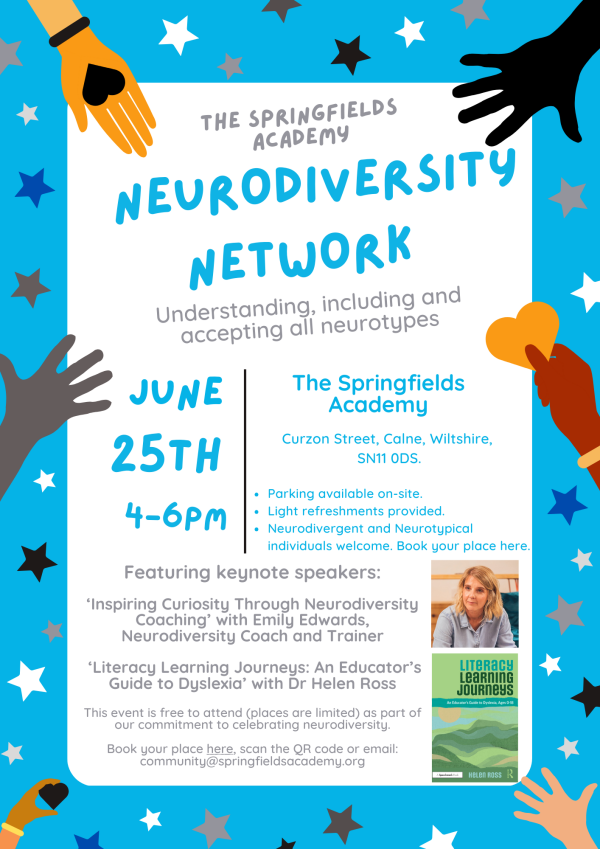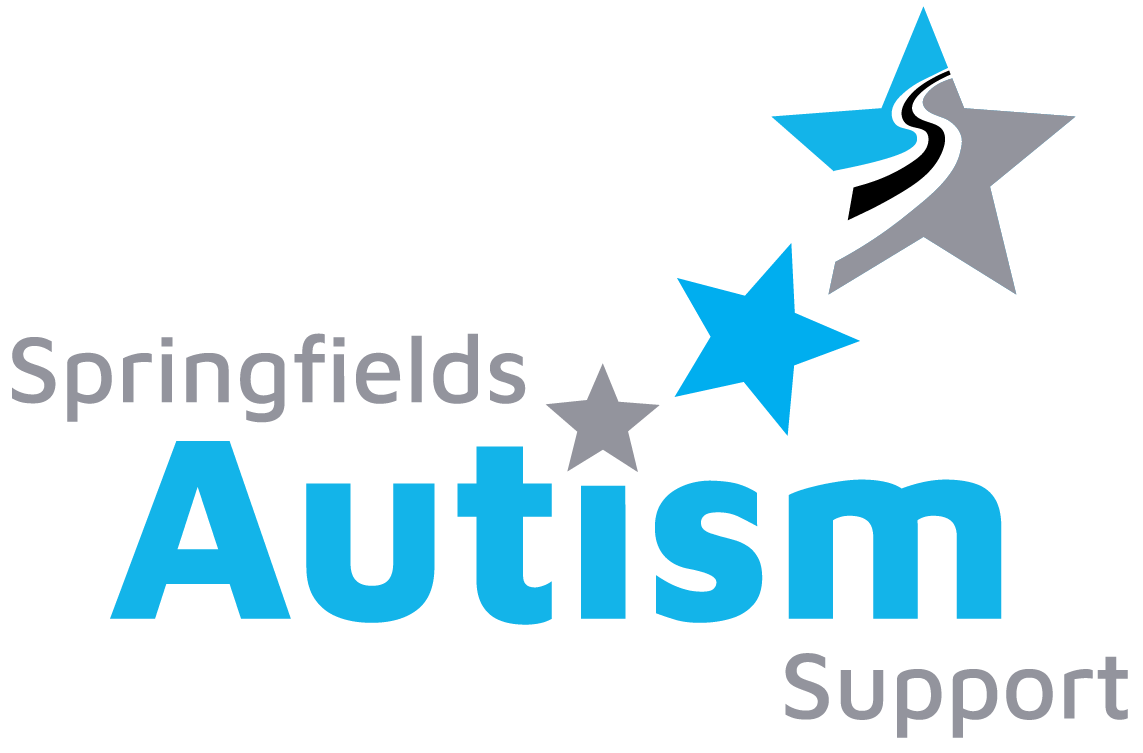Neurodiversity Networks
Neurodiversity Network – June 2025
Understanding, Including, and Accepting All Neurotypes
Join us for our next Neurodiversity Network event. This event is free and open to educators, families, professionals, and anyone interested in fostering neurodiversity awareness and inclusion.
Event Details
Date: Wednesday, 25th June 2025
Time: 4-6pm
Location: The Springfields Academy, Curzon Street, Calne, Wiltshire, SN11 0DS
Cost: Free
Book your place here: GoodHub | Neurodiversity Network with Emily Edwards and Dr Helen Ross
Guest Speakers
We are thrilled to welcome:
Dr. Helen Ross – independent educational research consultant, specialist assessor, and SEND expert.
Emily Edwards from With Insight Coaching – Neurodiversity Coach and Trainer
Benefits of attending
- Connect with a community passionate about neurodiversity.
- Learn from experts and gain practical strategies for inclusion.
- Share experiences and best practices in supporting neurodivergent individuals.
- Support the ongoing efforts to promote understanding and acceptance of all neurotypes.

At our October 2024 event we were joined by guest speakers Alice McSweeney and Dr Helen Curran. Jessica Coulson, one of our Springfields Autism Support Advisors, tells us more.
My top take-aways from the Neurodversity Network – 16.10.24
Alice McSweeney
Alice spoke about Autistic culture, the impact of language and developing positive autistic identity. Some of the key points I took away from Alice’s talk were:
· The importance of neuro-affirming language. Changing the language used when discussing neurodiversity can have a large impact on autism culture and positive autistic identity. For instance changing language such as ‘behaviour problem’ to ‘dysregulated’ or ‘disorder’ to ‘difference’ can create a welcoming and understanding culture.
· Person first language vs identity first language – Research shows that the general preference moves towards identity first language e.g. autistic person, rather than person first language e.g. person with autism. However it is important to recognise that each individual will have preferences, and it is good practice to ask if you are unsure.
· Double Empathy theory – Research from Brunel University carried out a study to investigate different communication styles amongst neurodiverse and neurotypical people. For many years, there has been a myth that autistic people do not understand or feel empathy towards neurotypical people, however this study found that neurotypical people also struggle to recognise emotions and communicate with neurodiverse people. This links to research about double empathy theory, which suggests that people often understand and communicate better with other people with similar neurology. This is called Neurokin.
· Double empathy theory (communication)– Neurokin (people with similar neurological styles or communication styles) are better able to communicate with each other, whilst mismatched communication styles can cause challenges. Often there is pressure put on a neurodivergent person to change their communication style in order to ‘fit the norm’, however both neurodiverse and neurotypical people need to learn how to communicate in different ways with different people. There is no right or wrong way to interact.
Dr Helen Curran
Helen spoke about making reasonable adjustments within work, and spoke from a place of evidence based theory and practice, as well as lived experience.
The key points I took from Helen’s talk were:
· Research shows that children with ADHD on average hear 22000 more negative comments than neurotypical children within the same time period. The impact of language with these children matters and impacts upon their engagement and progress.
· People are more likely to stay in work if they are comfortable and feel valued. It is imperative that people have access to reasonable adjustments to better help them carry out their jobs. This could be simple changes such as avoiding ‘no notice’ meetings, or clarifying expectations in writing.
· What helps?
o Enabling people to work from home if possible
o Providing flexible work schedule where possible, to allow people to work within their most productive hours
o Providing clear communication channels and expectations
o Allow pre-processing of meetings by providing an agenda ahead of time, and circle back to the agenda at the end of meetings
o Apply ‘coaching’ through unconditional positive regard, allowing team members to be their authentic selves, focus on the ‘what’ and ‘how’ when questioning rather than the ‘why’.




